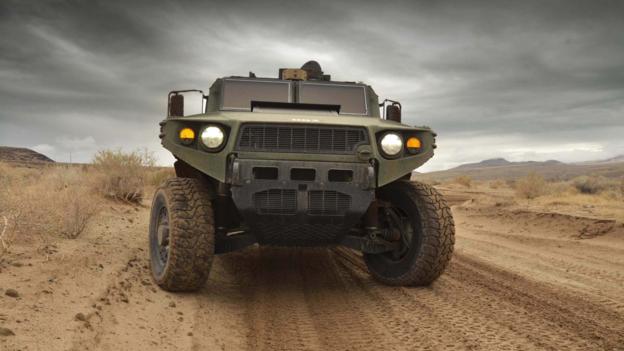
TARDEC Ultra Light Vehicle prototype
(US Army)
A fuel-efficient, lightweight hybrid vehicle that could keep soldiers safe? It might sound like mission impossible, but such a machine is already roaming the earth – albeit on a tight leash.
A rugged new US Army research prototype Ultra Light Vehicle (ULV) has recently entered an advanced blast-testing phase in Michigan, with further tests scheduled for mid-December in Nevada

TARDEC ULV prototype (US Army)
Developed by the Army’s Tank Automotive Research, Development and Engineering Center (TARDEC), this all-wheel-drive beast is unusual for reasons that go well beyond its hybrid powertrain. It was designed in conjunction with non-traditional contractors, such as the motorsport-steeped Roush Enterprises. Moreover, it’s a fuel-efficient hybrid vehicle, its rear-mounted lithium-iron phosphate battery charged by a 175-horsepower Subaru turbodiesel boxer engine. And although it is smaller and lighter than other similar Army vehicles, such as the long-serving Humvee, it still offers vanguard blast-mitigation and survivability features.
“We wanted to kick up the survivability in a smaller, more agile vehicle, said Mike Karaki, the ULV project manager. “We’ve found that smaller vehicles are better suited to handle tough terrain like that found in Afghanistan.”
Predictable, reliable performance was of paramount importance in development. “It’s a very easy vehicle to drive,” he adds. “It’s very quiet, there’s plenty of power and it maneuvers easily. It drives like a large SUV.”
Though Karaki emphasises that the prototype is not intended as a replacement for the venerable Humvee, the US Department of Defense has recently awarded research and development grants to contractors with that explicit purpose in mind. The ULV project, the Army has stated, is scheduled to conclude at the end of fiscal-year 2014.
Meantime, here are some slightly staggering numbers associated with the ULV:
- Payload capacity of 4,500lbs
- Fuel economy of 14.7 payload-tonne-miles per gallon, making it a veritable gas-sipper compared to similar vehicles, which achieve about 50% lower mileage.
- Weighs about 14,000lbs, but thanks to advanced technologies such as lighter-weight ceramic and composite armour, the ULV possesses the blast-deflection capabilities of a 35,000lb to 45,000lb vehicle. “It’s not as light as a dune buggy, but for the threats it’s designed to take on, it’s lightweight,” Karaki says. “On average, the advanced-composite materials are 30% to 60% lighter than steel counterparts.”
- A “clean” underbody (largely courtesy of the hybrid power train), which disperses blast energy that traditional components – such as a driveshaft, frame rails and transfer case – help retain. “A blast slides off because nothing hinders it,” Karaki notes. “And by removing those traditional components, they can’t become secondary projectiles.”
- A “crushable” floating-floor system (facilitated by the clean-underbody design), which absorbs blast energy.
- A driving range of about 350 miles, depending on speed, payload and terrain. If the vehicle runs out of fuel, it can drive up to 21 miles farther on a fully charged battery. If fuel runs out during, say, a silent-watch surveillance mission, the ULV can idle for about 7½ hours on a fully charged battery.
- Two electric drive motors, one front-mounted and one rear-mounted. Either motor can power the vehicle alone.
- Lightweight components that range from the suspension and wheels to carbon-ceramic brakes and tires (the latter, custom-made by off-road racing supplier Mickey Thompson Performance Tires, are 15% to 25% lighter than traditional models).
- Seven cab exits, including clamshell front and rear doors, compared to four or five on comparable vehicles.
Alas, disappointment awaits those who hope to someday grab a ULV on the surplus market: the three ULV prototypes built by TARDEC are only concept vehicles.
“You’ll never see one of these in battle or on a production line,” says Karaki, noting that on a hypothetical production run of 15,000 vehicles, the ULVs would price out at about $260,000 apiece. “Our intent is to test these vehicles, then use the resulting data to compile the best features into a somewhat similar vehicle you might see five or 10 years down the road.”
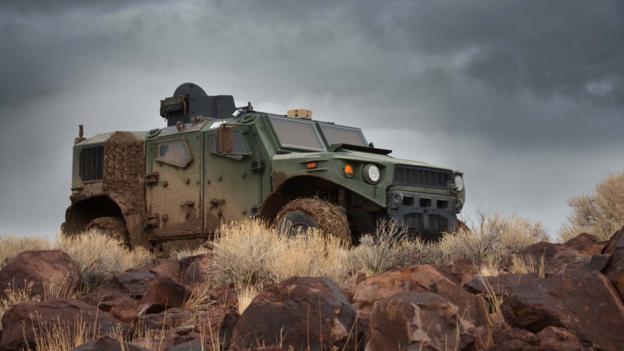
TARDEC Ultra Light Vehicle prototype
(US Army)

TARDEC Ultra Light Vehicle prototype
(US Army)
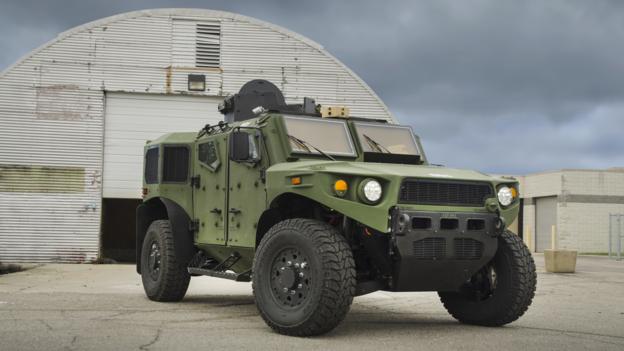

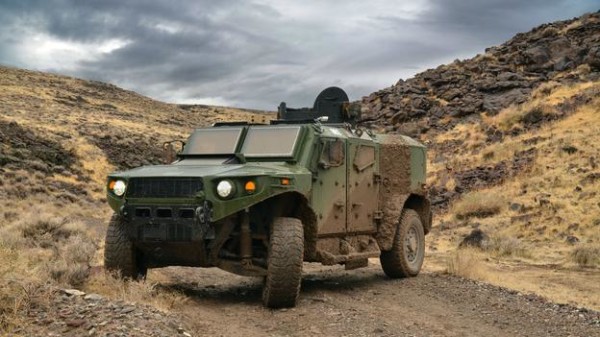


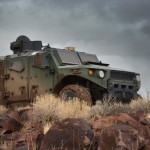
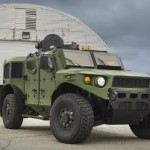
Leave a reply